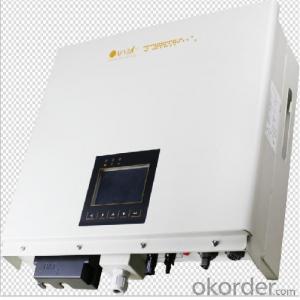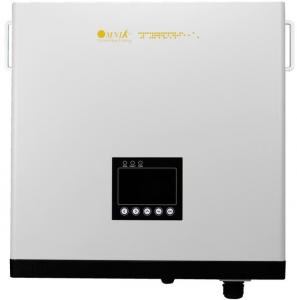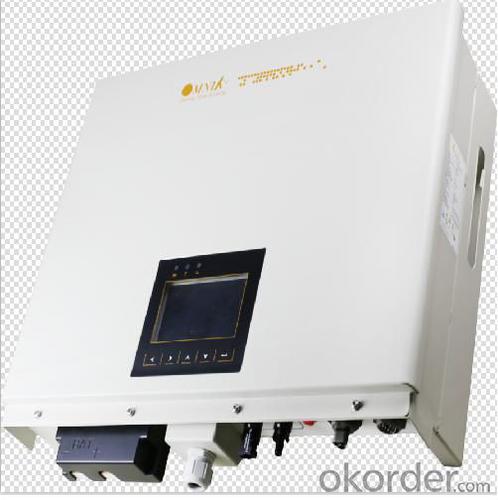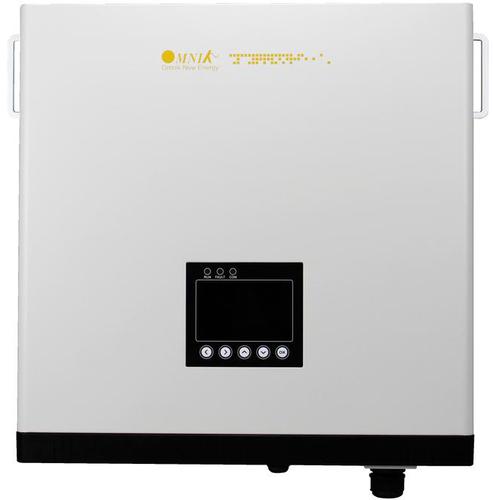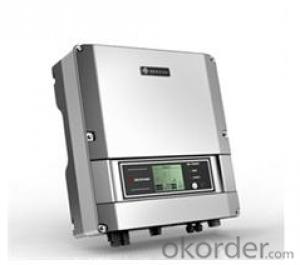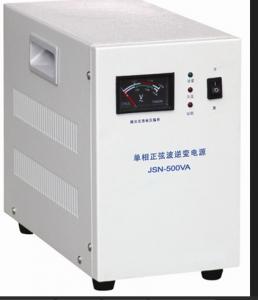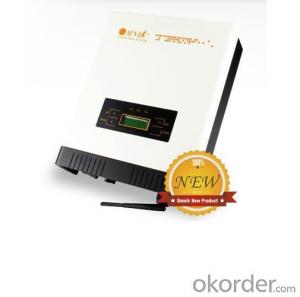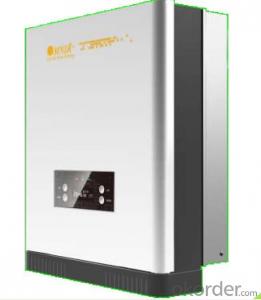480V On Grid Solar Inverter Omniksol-17k-TL
- Loading Port:
- Shanghai
- Payment Terms:
- TT or LC
- Min Order Qty:
- 100 pc
- Supply Capability:
- 3000 pc/month
OKorder Service Pledge
OKorder Financial Service
You Might Also Like
Omnik new energy solar inverter
Omniksol-2.0k-TL Photon Efficiency up to 3kW
in the world------ Photon tested Jan. 2012.
Omniksol-17k-TL
Futures
Max. Efficiency 98.2%, Euro. Efficiency 97.8%.
Double MPPT, MPPT accuracy up to 99.9%.
IP65 design, work properly under severe outdoor circumstances.
Full solution of safety protection, DC switch integrated.
Flexible input and output connections, support RS485, Ethernet
and USB communication.
Transformerless design and high power density, lighter and more
convenient for installation.
technical data:
Type | Omniksol-13k-TL | Omniksol-17k-TL | Omniksol-20k-TL |
Max. PV-Generator Power [W] | 13500 | 17600 | 21200 |
Max. DC voltage [V] | 1000 | 1000 | 1000 |
MPPT DC voltage Range [V] | 400-800 | 440-850 | 440-850 |
Turn off DC voltage [V] | 640 | 640 | 640 |
Max. DC Current [A] | 22/11 | 22/22 | 22/22 |
Nominal DC Current [A] | 28 | 33 | 33 |
Number of DC Connection | 2 | 2 | 2 |
DC-Connection | MC4 | MC4 | MC4 |
Number of MPP trackers Turn on Power [W] | 2 | 2 | 2 |
| Omniksol | |||
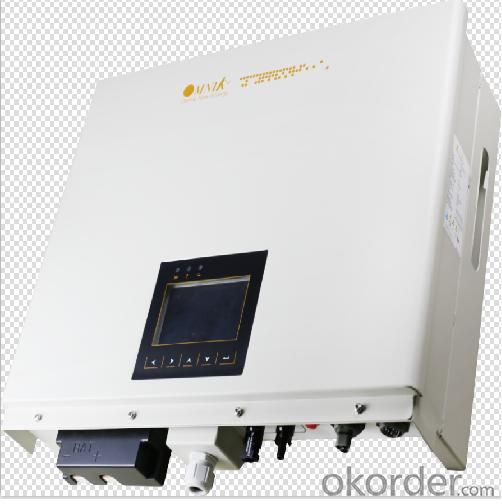
FAQ
Q1. What is the difference between inverter and solar inverter?
A1. Inverter only has AC inpput, but solar inverter both connect to AC input and solar panel, it saves more power.
Q2. What is the difference between MPPT&PWM?
A2. MPPT has higher efficiency, it can track the max power point and won't waste energy.
- Q: Can a solar inverter be used in areas with high humidity and salt air exposure?
- Certainly, a solar inverter can indeed be utilized in regions characterized by elevated humidity levels and salt air exposure. Nevertheless, it is imperative to opt for a solar inverter explicitly engineered to withstand such circumstances. The presence of high humidity has the potential to induce corrosion and harm electronic components, while salt air exposure can expedite corrosion due to the corrosive properties of salt. Consequently, it is vital to choose an inverter constructed from corrosion-resistant materials, such as stainless steel or coated circuit boards. Furthermore, consistent maintenance and cleaning of the inverter are essential to guarantee optimal performance and longevity in such environments.
- Q: What are the communication protocols used in solar inverters?
- The communication protocols commonly used in solar inverters are Modbus, SunSpec, and DNP3. These protocols enable the inverters to communicate with other devices and systems, such as monitoring software, energy management systems, and smart grids, to exchange data and control commands.
- Q: How does a solar inverter contribute to reducing carbon emissions?
- A solar inverter helps reduce carbon emissions by converting the direct current (DC) electricity generated by solar panels into alternating current (AC) electricity that can be used to power homes, businesses, or the electrical grid. By enabling the use of clean and renewable solar energy, solar inverters reduce the need for electricity generated from fossil fuel sources, such as coal or natural gas power plants. This results in a significant reduction in carbon emissions, as solar power is a clean and sustainable alternative to traditional energy sources.
- Q: How do you size a solar inverter for a solar power system?
- To size a solar inverter for a solar power system, you need to consider the maximum power output of the solar panels and the total load you want to power. The inverter's capacity should be equal to or greater than the total power output of the solar panels to ensure efficient energy conversion. Additionally, you should also consider the voltage and current requirements of the load to ensure compatibility with the inverter. It is recommended to consult with a professional or use online sizing tools to accurately determine the appropriate inverter size for your specific solar power system.
- Q: Can a solar inverter be used with different types of power conditioning units?
- Yes, a solar inverter can be used with different types of power conditioning units as long as they are compatible and properly integrated into the solar power system. The inverter's specifications and features should be considered to ensure compatibility with the specific power conditioning unit being used.
- Q: What are the common issues and troubleshooting steps for a solar inverter?
- Some common issues with solar inverters include no power output, low power output, display or communication errors, and overheating. Troubleshooting steps for these issues may involve checking the input voltage and connections, inspecting the DC and AC cables for damage, resetting the inverter, updating firmware or software, ensuring proper ventilation and cooling, and contacting technical support if necessary.
- Q: Can a solar inverter be used with a net metering system?
- Yes, a solar inverter can be used with a net metering system. In fact, a solar inverter is an essential component of a net metering system. It converts the direct current (DC) electricity generated by the solar panels into alternating current (AC) electricity that can be used to power the home or business. The excess electricity produced by the solar panels is fed back into the grid through the net meter, allowing the utility company to credit the owner for the excess energy produced.
- Q: What is the role of a solar inverter in fault ride-through capability?
- The role of a solar inverter in fault ride-through capability is to ensure that the solar power system remains connected to the grid during grid faults or disturbances. The inverter is responsible for detecting the fault and adjusting its operating parameters to ride through the fault without disconnecting from the grid. This capability helps maintain a stable and reliable power supply, as the solar inverter can continue to inject power into the grid even during temporary faults, reducing the impact on the overall system stability.
- Q: Can a solar inverter be used for both grid-tied and off-grid systems?
- Yes, a solar inverter can be used for both grid-tied and off-grid systems. However, it is important to note that different types of inverters are designed specifically for each system. Grid-tied inverters are used to convert the DC power generated by solar panels into AC power to feed into the grid, while off-grid inverters are designed to convert DC power from solar panels into AC power for use in standalone systems. So, while the same physical inverter may not be suitable for both applications, there are inverters available for each system type.
- Q: What is the role of a solar inverter in preventing overloading?
- The role of a solar inverter in preventing overloading is to regulate the flow of electricity from the solar panels to the grid or the connected load. It continuously monitors the power output of the solar panels and adjusts the voltage and frequency to match the requirements of the load. By doing so, it ensures that the system does not exceed its capacity, preventing overloading and potential damage to the equipment.
Send your message to us
480V On Grid Solar Inverter Omniksol-17k-TL
- Loading Port:
- Shanghai
- Payment Terms:
- TT or LC
- Min Order Qty:
- 100 pc
- Supply Capability:
- 3000 pc/month
OKorder Service Pledge
OKorder Financial Service
Similar products
Hot products
Hot Searches
Related keywords
